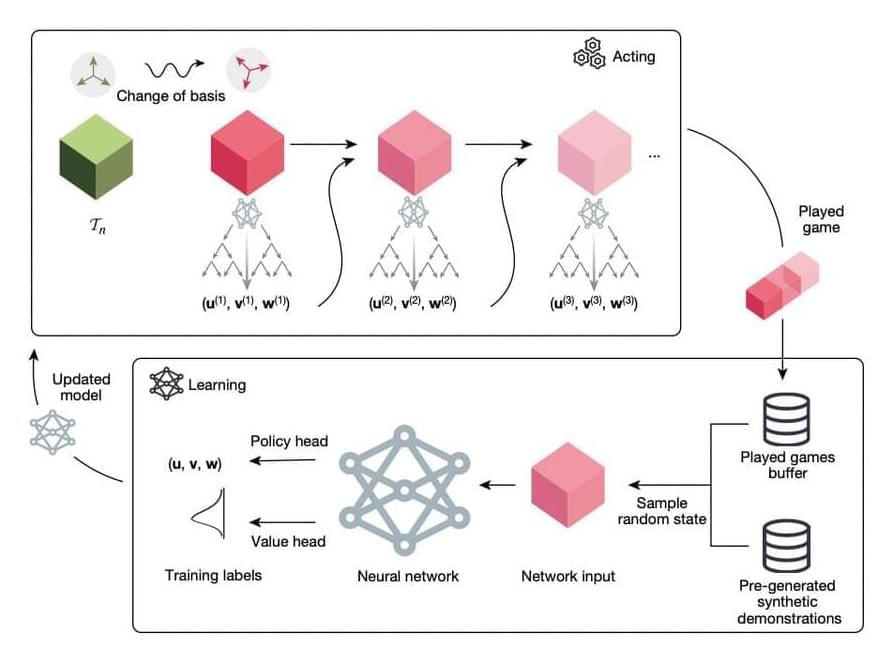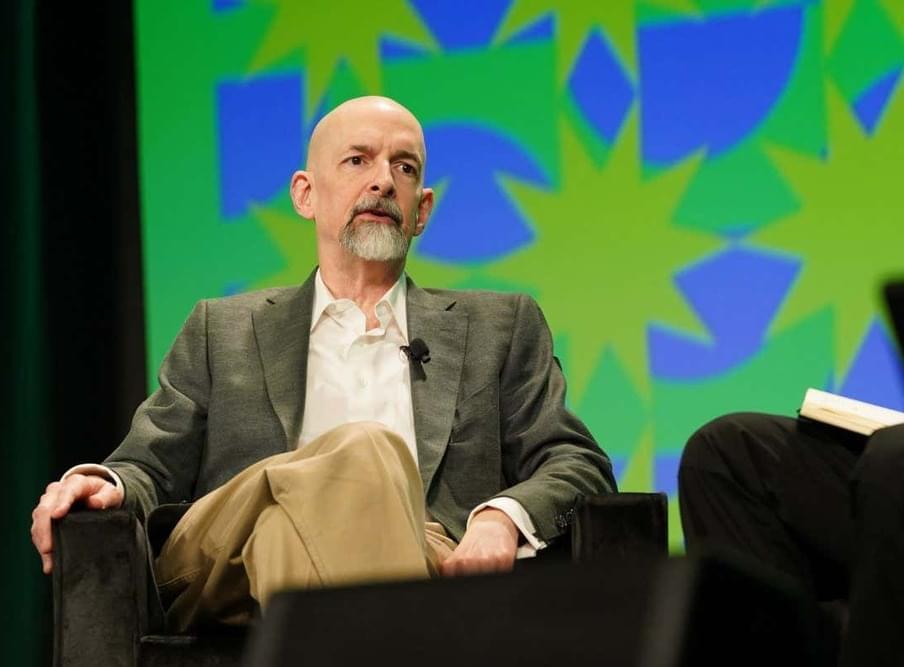face_with_colon_three circa 2021.
Microsoft has developed an AI program called BugLab, which can help you find and fix bugs in your code. Here’s how it works!



Improving the efficiency of algorithms for fundamental computations is a crucial task nowadays as it influences the overall pace of a large number of computations that might have a significant impact. One such simple task is matrix multiplication, which can be found in systems like neural networks and scientific computing routines. Machine learning has the potential to go beyond human intuition and beat the most exemplary human-designed algorithms currently available. However, due to the vast number of possible algorithms, this process of automated algorithm discovery is complicated. DeepMind recently made a breakthrough discovery by developing AplhaTensor, the first-ever artificial intelligence (AI) system for developing new, effective, and indubitably correct algorithms for essential operations like matrix multiplication. Their approach answers a mathematical puzzle that has been open for over 50 years: how to multiply two matrices as quickly as possible.
AlphaZero, an agent that showed superhuman performance in board games like chess, go, and shogi, is the foundation upon which AlphaTensor is built. The system expands on AlphaZero’s progression from playing traditional games to solving complex mathematical problems for the first time. The team believes this study represents an important milestone in DeepMind’s objective to improve science and use AI to solve the most fundamental problems. The research has also been published in the established Nature journal.
Matrix multiplication has numerous real-world applications despite being one of the most simple algorithms taught to students in high school. This method is utilized for many things, including processing images on smartphones, identifying verbal commands, creating graphics for video games, and much more. Developing computing hardware that multiplies matrices effectively consumes many resources; therefore, even small gains in matrix multiplication efficiency can have a significant impact. The study investigates how the automatic development of new matrix multiplication algorithms could be advanced by using contemporary AI approaches. In order to find algorithms that are more effective than the state-of-the-art for many matrix sizes, AlphaTensor further leans on human intuition. Its AI-designed algorithms outperform those created by humans, which represents a significant advancement in algorithmic discovery.
New to nerfstudio? Here we walk you through a step-by-step process on how to turn your favorite capture into a trendy 3D video in minutes.
Github: github.com/nerfstudio-project/nerfstudio.
Discord: discord.gg/uMbNqcraFc.
Twitter: @nerfstudioteam.
Getting started.
0:00 Hello from nerfstudio.
0:13 Preprocess your video.
0:27 Launching training and viewer.
Viewer basics.
1:03 Viewer scene introduction.
1:20 Moving around in viewer.
1:38 Overview of Controls Panel — train speed/output options.
1:55 Overview of Scene Panel — toggle visibility.
Creating camera trajectories.
2:16 Creating a custom camera path.
2:38 Camera spline options — cycle, speed, smoothness.
2:57 Camera options — move, add, view.
Rendering a video.
❤️ Check out Lambda here and sign up for their GPU Cloud: https://lambdalabs.com/papers.
📝 My paper “The flow from simulation to reality” with clickable citations is available here:
https://www.nature.com/articles/s41567-022-01788-5
📝 Read it for free here! https://rdcu.be/cWPfD
❤️ Watch these videos in early access on our Patreon page or join us here on YouTube:
- https://www.patreon.com/TwoMinutePapers.
- https://www.youtube.com/channel/UCbfYPyITQ-7l4upoX8nvctg/join.
🙏 We would like to thank our generous Patreon supporters who make Two Minute Papers possible:
Aleksandr Mashrabov, Alex Balfanz, Alex Haro, Andrew Melnychuk, Benji Rabhan, Bryan Learn, B Shang, Christian Ahlin, Eric Martel, Geronimo Moralez, Gordon Child, Jace O’Brien, Jack Lukic, John Le, Jonas, Jonathan, Kenneth Davis, Klaus Busse, Kyle Davis, Lorin Atzberger, Lukas Biewald, Luke Dominique Warner, Matthew Allen Fisher, Michael Albrecht, Michael Tedder, Nevin Spoljaric, Nikhil Velpanur, Owen Campbell-Moore, Owen Skarpness, Rajarshi Nigam, Ramsey Elbasheer, Steef, Taras Bobrovytsky, Ted Johnson, Thomas Krcmar, Timothy Sum Hon Mun, Torsten Reil, Tybie Fitzhugh, Ueli Gallizzi.
If you wish to appear here or pick up other perks, click here: https://www.patreon.com/TwoMinutePapers.
Thumbnail background design: Felícia Zsolnai-Fehér — http://felicia.hu.
Károly Zsolnai-Fehér’s links:

Science-fiction author Neal Stephenson predicted cryptocurrencies and virtual worlds — even coining the term metaverse — in his 1992 novel Snow Crash. Now, 30 years later, he is combining the two ideas by launching a blockchain-powered open metaverse. It is a move that sets him against big tech firms with their own metaverse plans, so why is he doing it and what even is an open metaverse?
Developers have pushed various versions of the metaverse for decades, but nothing has stuck.
Lamina1 was contacted for comment.
Neal Stephenson was contacted for comment.
Circa 2015 face_with_colon_three
From driving water wheels to turning turbines, waterhas been used as the prime mover of machinery and the powerhouse of industry for many centuries. In ancient times, the forces of flowing water were even harnessed to power the first rudimentaryclocks. Now, engineers at Stanford University have created the world’s first water-operated computer. Using magnetized particles flowing through a micro-miniature network ofchannels, the machine runs like clockwork and is claimed to be capable ofperforming complex logical operations.
Using poppy-seed sizeddroplets of water impregnated with magnetic nanoparticles (those handy little elementsbeing used in everything from drug delivery inhumans to creating e-paper whiteboards), the new fluidic computer uses electromagnetic fields to accurately pump thesedroplets around a set of physical gates to perform logical operations. Suspendedin oil and timed to move in very specific steps, the droplets in the system cantheoretically be used to accomplish any process that a normal electroniccomputer can, albeit at considerably slower speeds.
Stanford assistant professor Manu Prakash has spent almost a decadethinking about such a device, ever since he was a graduate student. The manyand varied components required of a fluidic computer have slowly coalesced inhis mind over that time, with the most fundamental component of all – an accurateoperating clock to drive the logic – being the crucial element in bringing hisinvention to fruition. Ultimately, Prakash built a rotating magnetic field to synchronize the flow of all the droplets in a precisely timed manner, andact as the clock.

Circa 2014 face_with_colon_three
A liquid hard drive containing a suspension of nanoparticles could be used to store impressive amounts of data: 1 terabyte per tablespoon.
Researchers from the University of Michigan and New York University have been simulating wet information storage techniques which uses clusters of nanoparticles suspended in liquid. These clusters of particles can store more data than conventional computer bits which have just two storage states: 0 and 1. The clusters of particles work a bit like Rubik’s Cubes to reconfigure in different ways to represent different storage states. A 12-particle memory cluster connected to a central sphere can have almost eight million unique states, which is equivalent to 2.86 bytes of data.
The system works by having nanoparticles attached to a central sphere. When the sphere is small, the outer particles trap each other into place, storing data. If the sphere is a bit larger, the particles can be reconfigured to store different information. The team created a cluster involving four particles on a central sphere — all made of polymers. By heating the liquid up, the spheres expand and the particles can rearrange themselves in predictable ways. Although the four-particle clusters have only two distinguishable configurations (i.e. like a regular bit), the plan is create clusters with many more particles.

